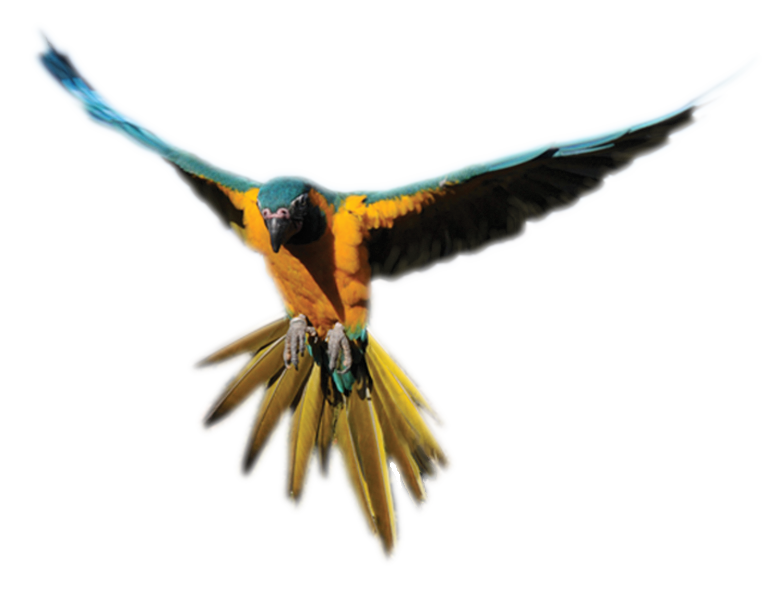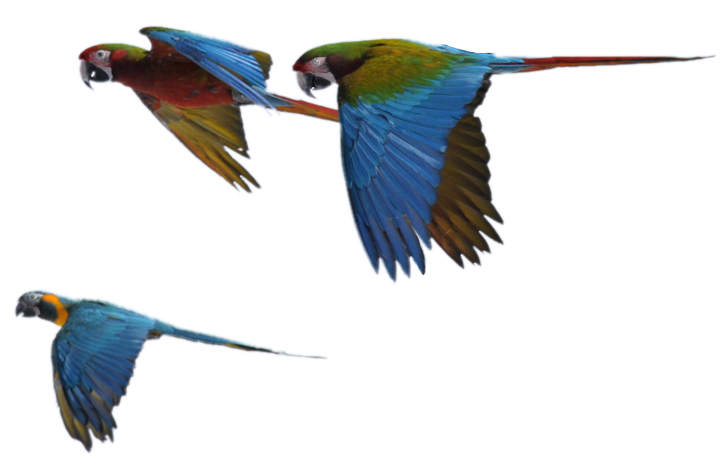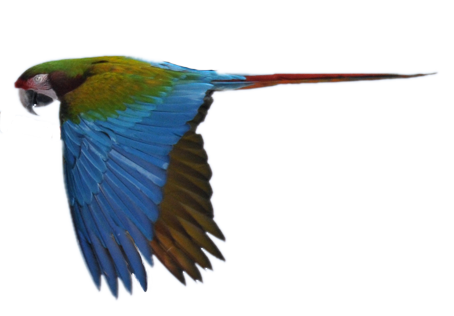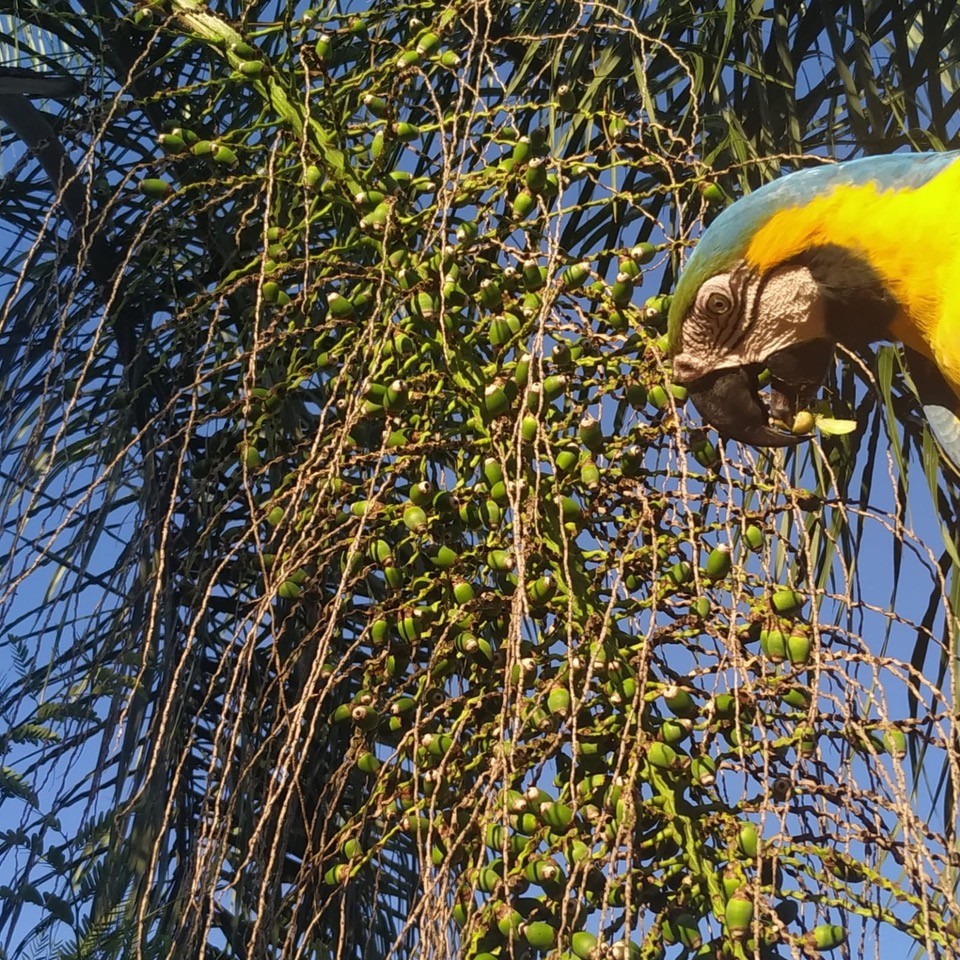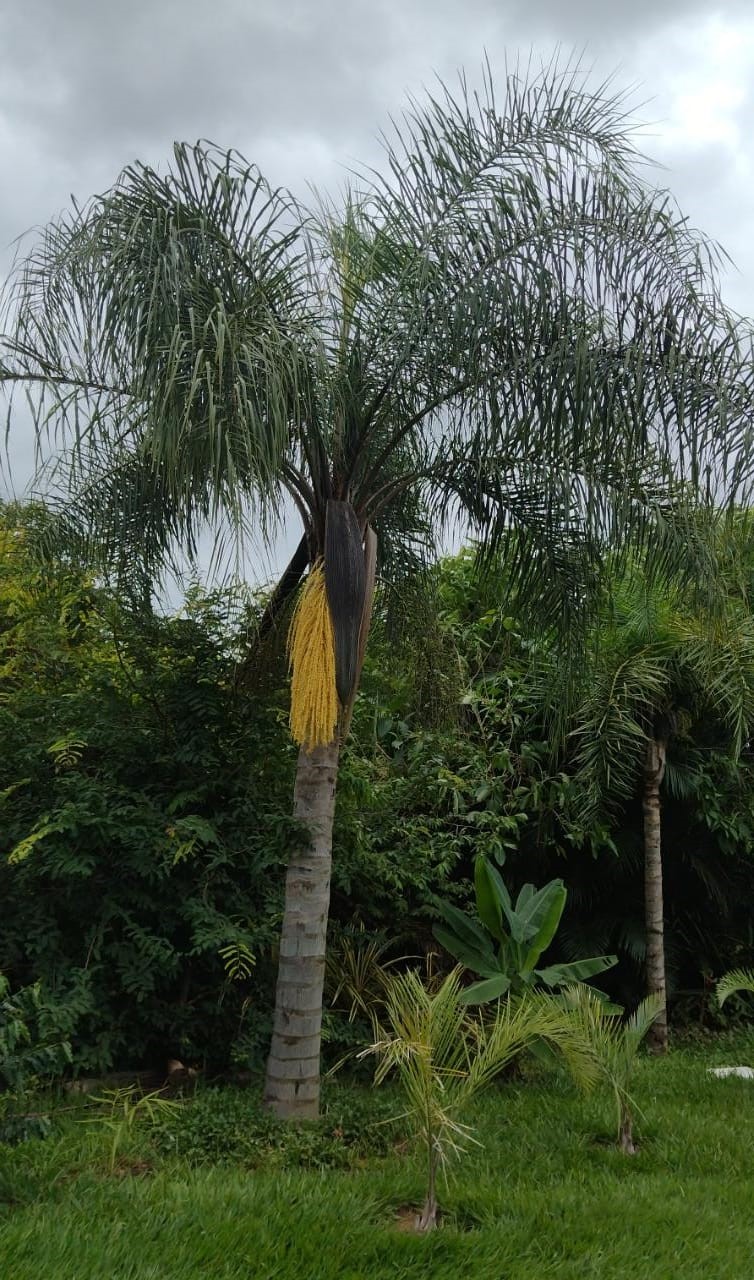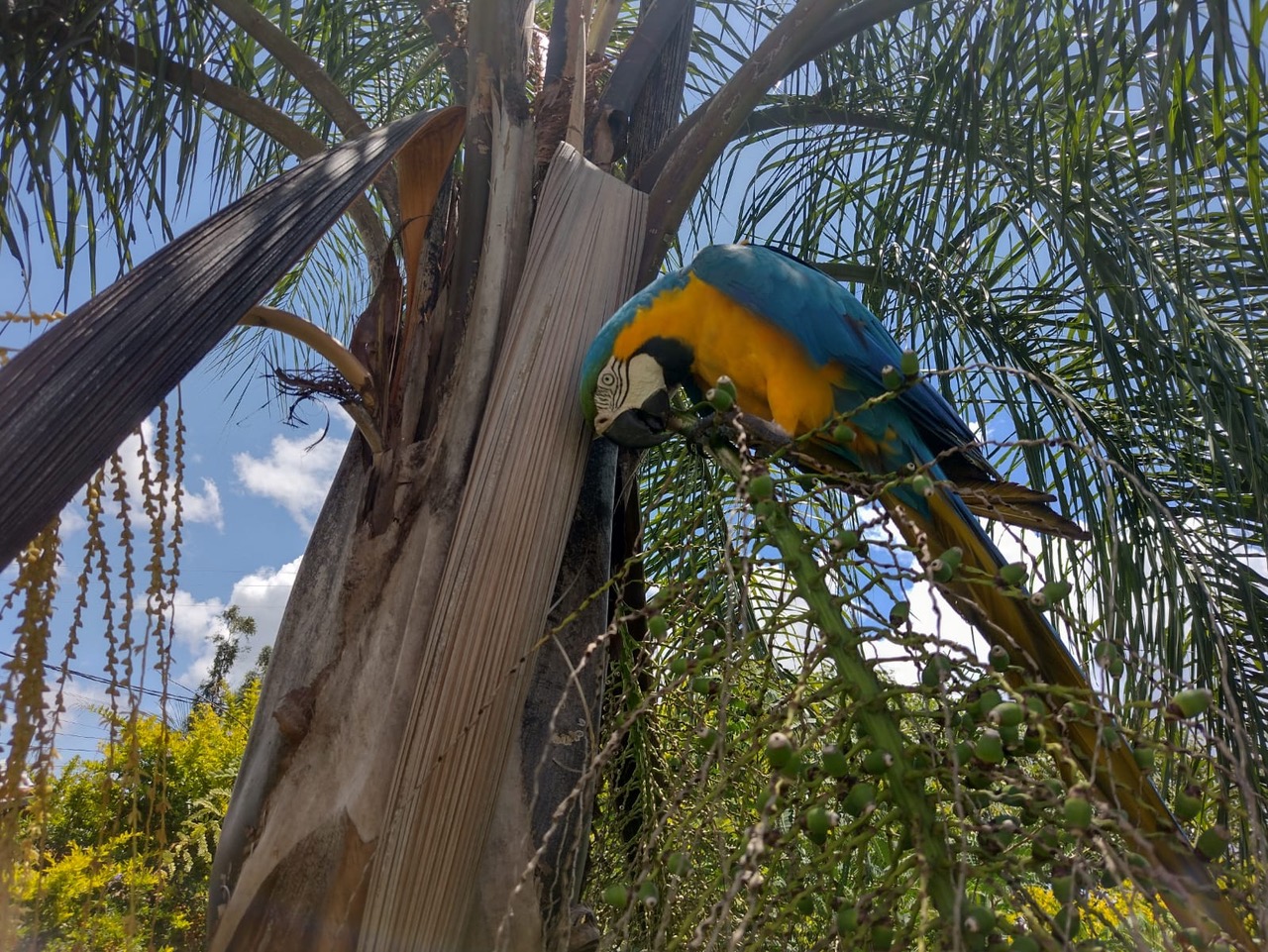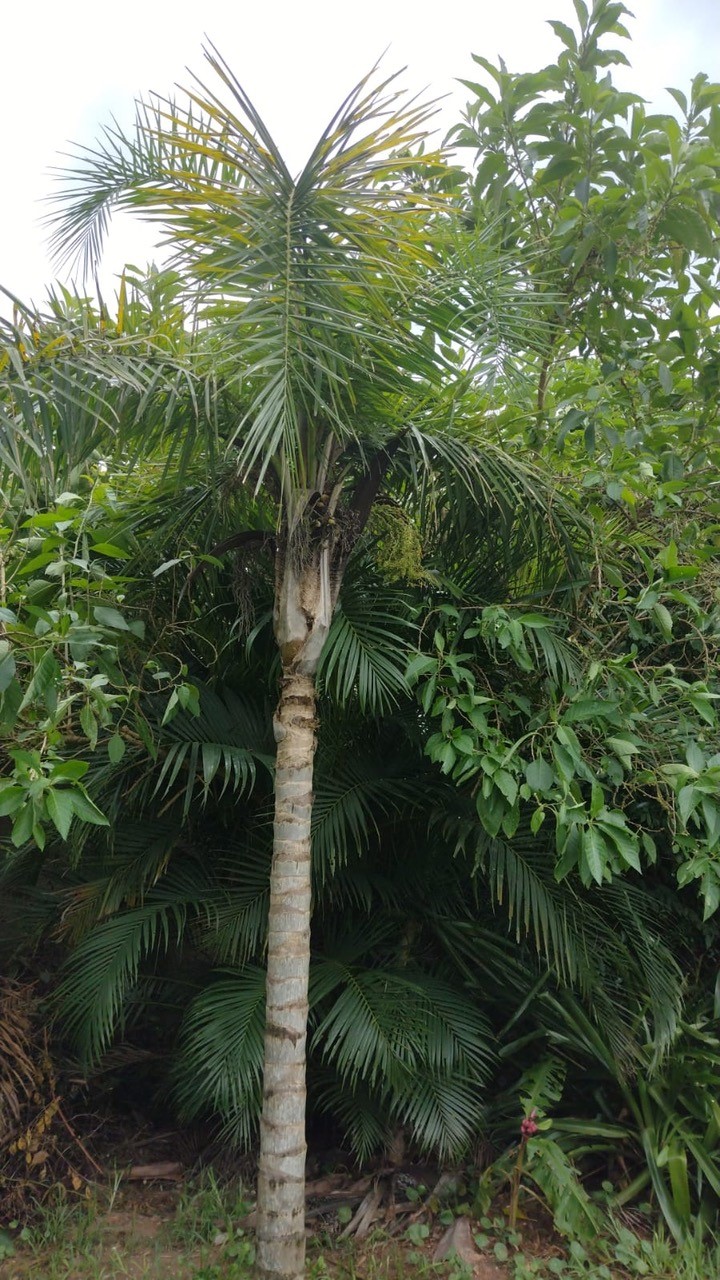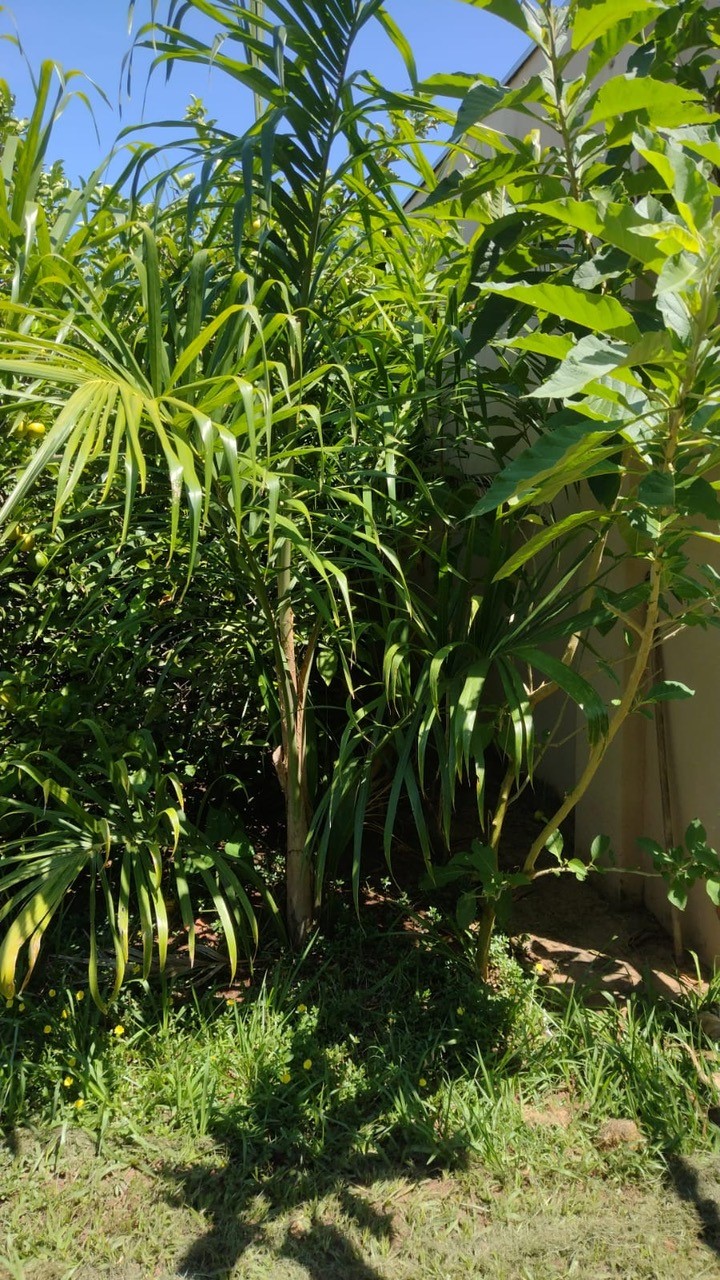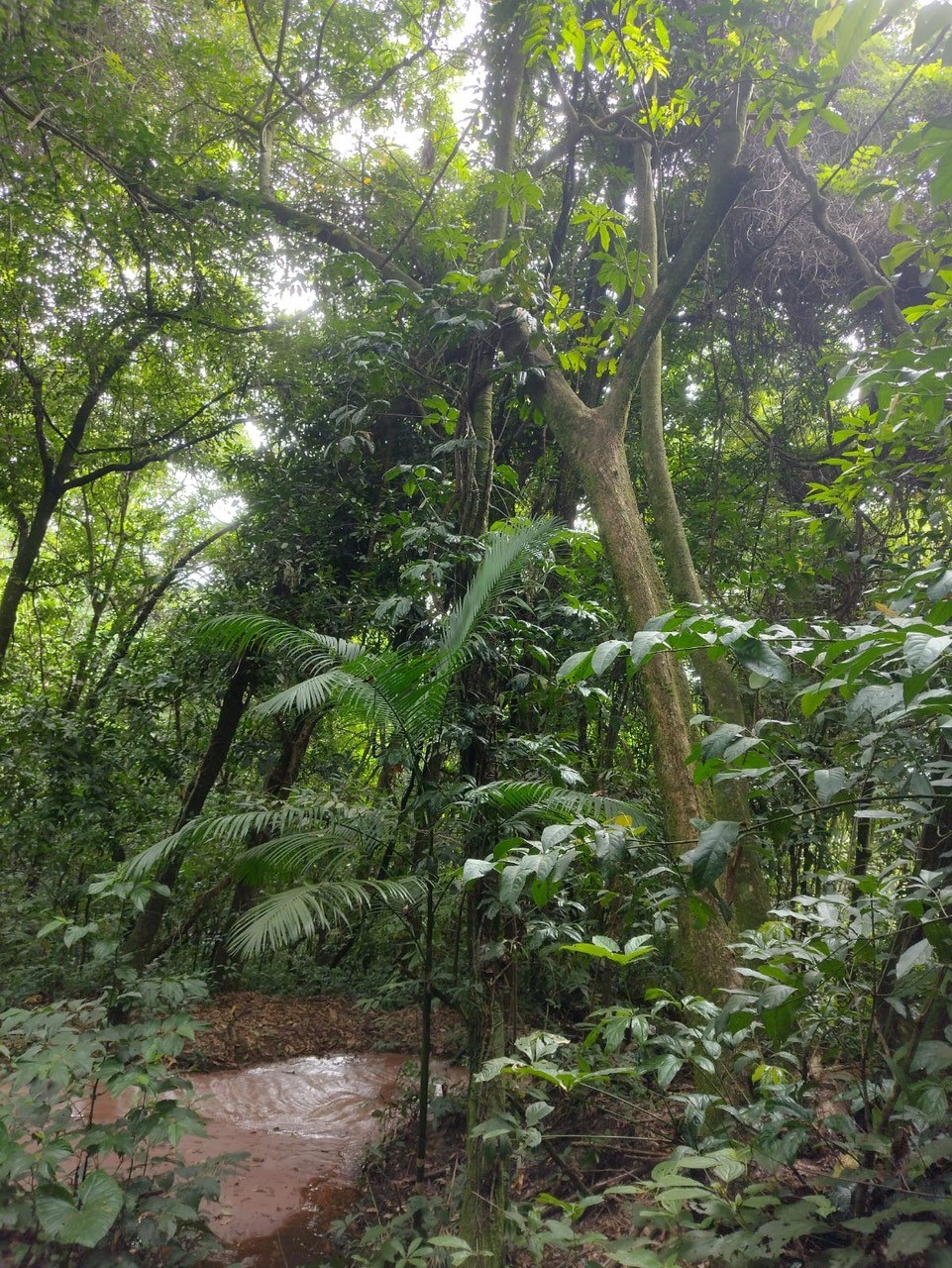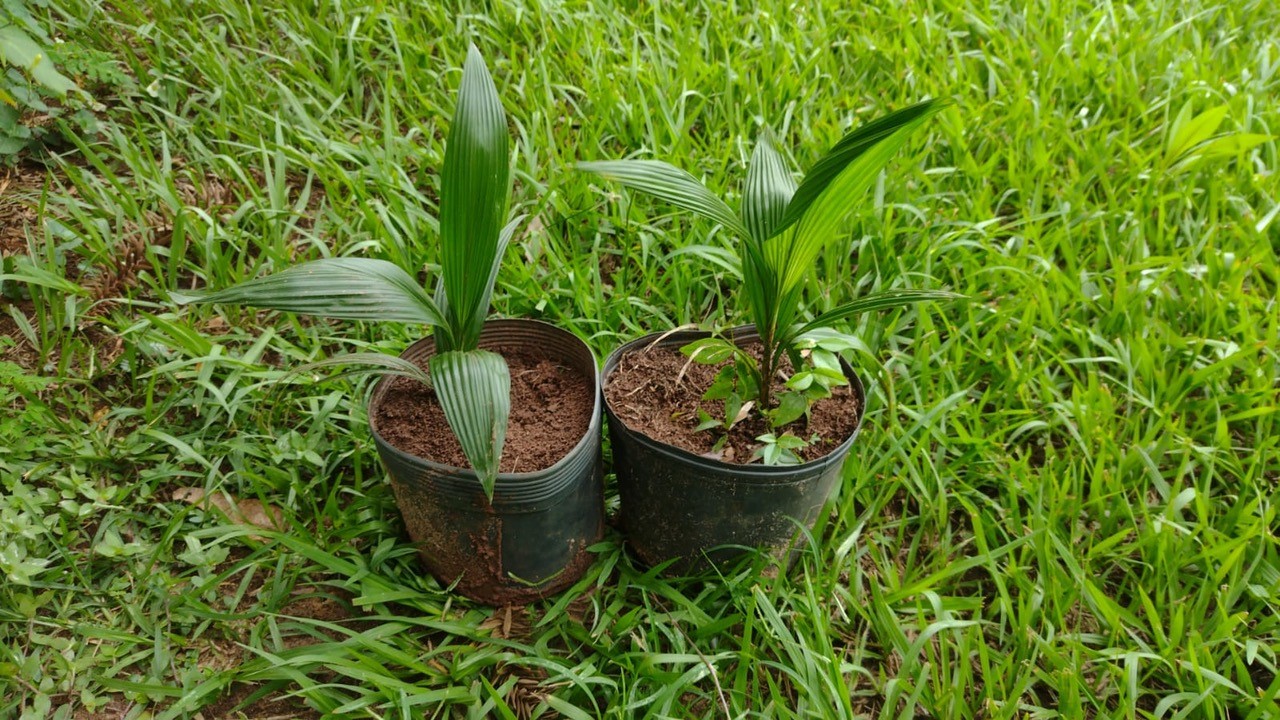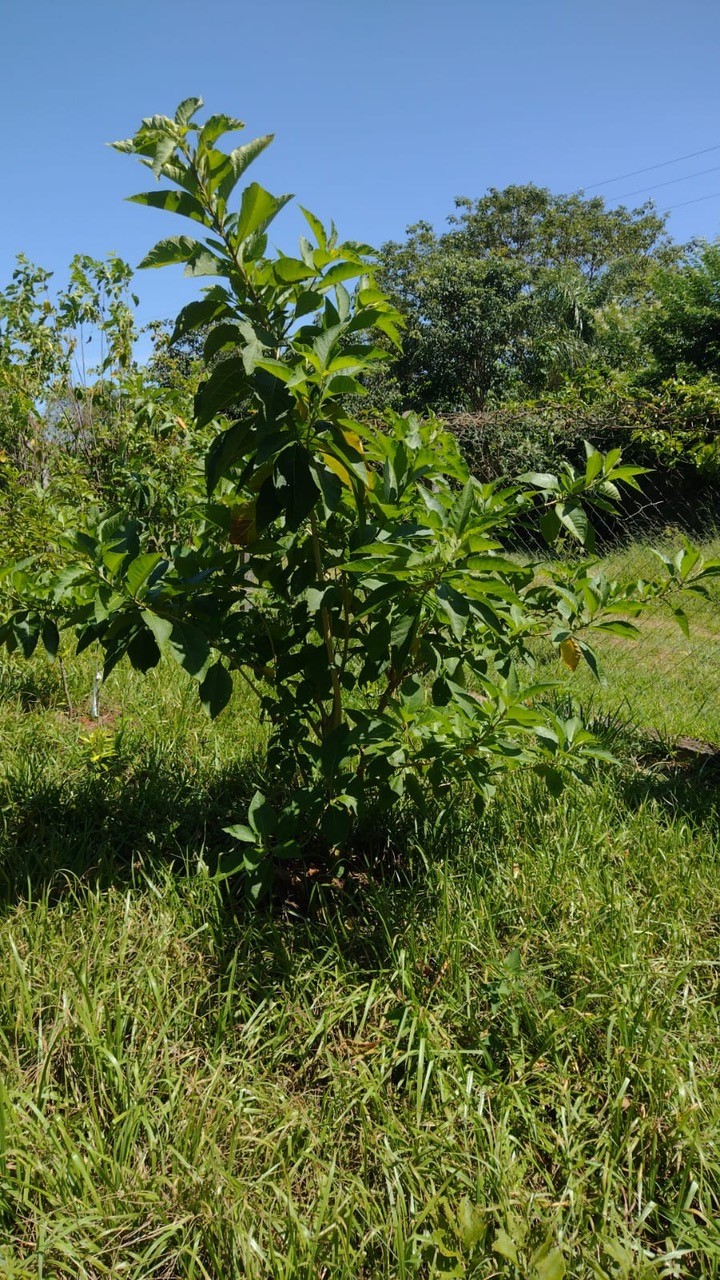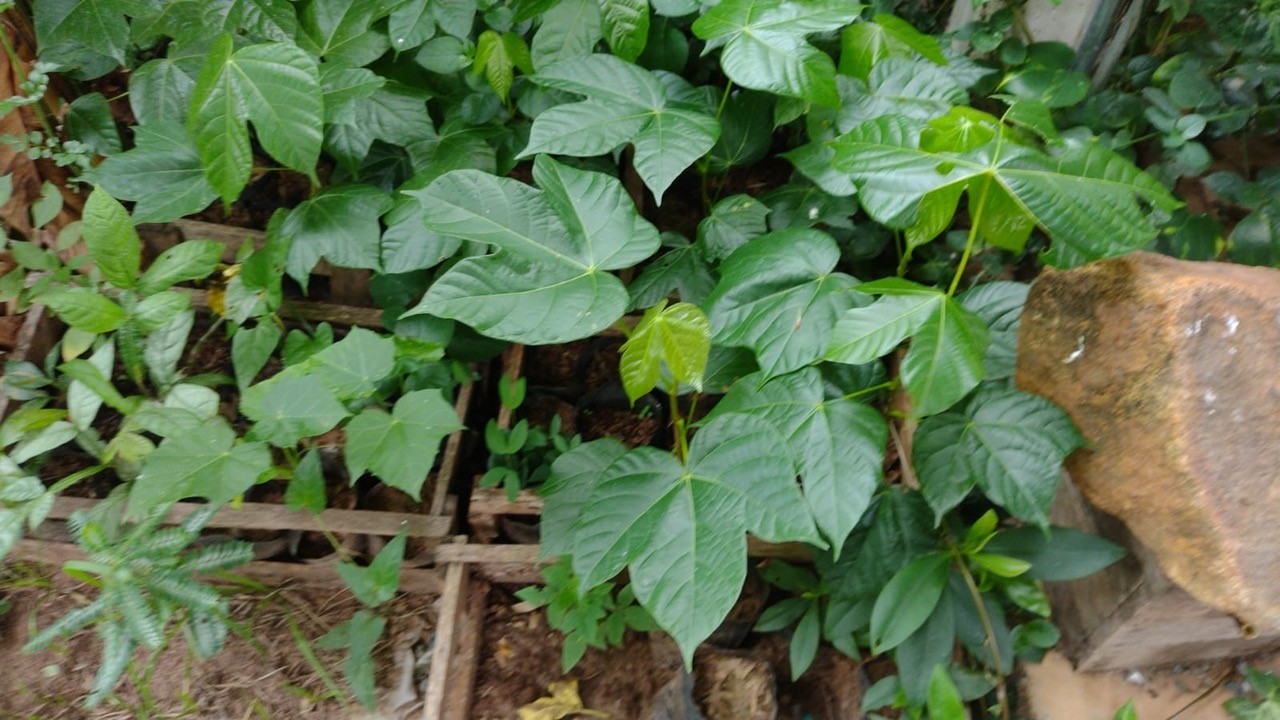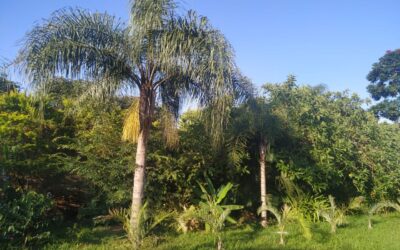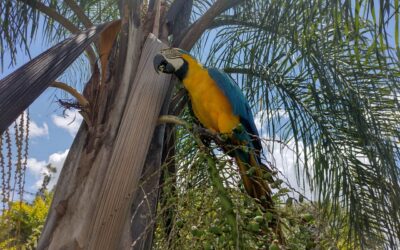BRI
Palms for Parrots
Please Help Us Fund BRI Release Projects!
By planting a Palm seed, a young Palm tree, or supporting land owners with mature Palm trees, you are helping to FUND BRI release projects while also providing the released birds with proper habitat and food sources.
About Our Program
BRI’s Palms for Parrots Program in Brazil
Introduction
Bird Recovery International (BRI) is planting 7000 trees to support future generations of parrots in an area in Brazil that BRI is repopulating with parrots. The BRI “free-flight release” project in Brazil is demonstrating how to utilize blue and yellow macaws from the pet trade to establish a wild population in an area where they once lived but are now extirpated (locally extinct). To do this BRI is using techniques and knowledge gained from 30 years of experience flying macaws as pets and as part of our educational public outreach programs.
Parrots, with very few exceptions e.g., quaker parrot (Myiopsitta monachus), do not build nests, instead, they nest in cavities that must be available. Originally tree cavities were not a problem as there were enough cavities for parrots and other animals, as for nowadays, this scenario has changed a lot and there is a competition for tree cavities and not enough for all the animals that use them -not only parrots, many mammals use tree cavities as shelter. There are some tree species that naturally are prone to breaking branches that will then make a cavity in the tree stem. As time goes by, this cavity grows bigger and can now host an animal inside. Hollow dead palm trees serve well for this purpose, but it also means we lost a palm tree as a food source.
Our Work
The BRI Palms for ParrotsTM tree planting program operates under the supervision of UNIFAL-MG (Federal University of Alfenas) and is a part of the university’s community outreach – establishing common goals in the community without hierarchical control. The university program focuses on increasing public awareness of the importance of native palm tree species to the environment. It also emphasizes the need for planting native palm trees in public/urban spaces to aid conservation value to both public and private gardens/yards.
All of our BRI Parrot Projects are designed to:
- Take advantage of the birds’ childhood development to prepare their instinctive tendencies to be fully “calibrated” to the intended release environment
- Ensure food supply and breeding opportunities for the expanding flock of birds in the release area, and the surrounding habitat area they may move into in the future
- Financially incentivize the community members to value and support the birds, we pay locals to plant the palm seeds, seedlings and protect mature palm trees in select areas
- Generate funding for our Palms for Parrots project.
For more details about our Program, download our Brochure below.
You can help our project by Planting A Palm! We have options for everyone and all options help to provide life-sustaining habitat for our wild parrots.
- Spend $5 to Plant a Palm seed. Not all seeds will sprout but if we plant enough of them, then enough will survive and add to the habitat.
- Spend $25 to plant a tree that has already sprouted and has a full year’s growth. This shortens the time it takes to produce essential food (fruit) by a year.
- Spend $25 a month to help BRI give land owners with mature trees in the area another reason to protect these fruit producing, mature trees.
You can also make a donation of any size using the button below or at the bottom of the page. 100% of all donations go to our parrot preservation efforts and educational programs and are greatly appreciated.
Palm Tree Species
Jerivá Syagrus romanzoffiana: This is a very important palm tree not only because it occurs along the Atlantic Rainforest, but also reaches Cerrado and Pantanal, occurring not only in Brazil, but also in Uruguay, Paraguay and Argentina (Lorenzi et al. 2010: 347). This species may reach up to 15 meters tall and 50 cm in diameter (Lorenzi et al. 2015: 160). Nearly all arboreal species in the Syagrus genus is of great importance for parrots (Souza 2005: 385) and most of the species produce fruits all year round, but with greater intensity during the rainy season (Lorenzi et al 2010: 385). The size this tree can reach is ideal for nesting if the tree happens to die after being taller than 5 meters and wider than 40 cm, of course smaller parrot species would benefit from smaller dead trees as well.
Gariroba Syagrus oleracea: This species overlaps with jerivá in the major areas of its occurrence (Lorenzi et al. 2010: 339). This species can reach up to 20 meters tall and 25 cm in diameter, with narrower stems than jerivá (Lorenzi et al. 2015: 159), but the fruits and nuts are much bigger, about the double size of jerivá (Lorenzi et al. 2010: 339), thus being of greater importance for larger parrots. Nearly all arboreal species in the Syagrus genus is of great importance for parrots (Souza 2005: 385) and most of the species produce fruits all year round, but with greater intensity during the rainy season (Lorenzi et al 2010: 339).
Pupunha Bactris gasipaes: This palm tree originally had spines on the trunks, but due to Native American selection, we now have a spineless cultivar and can be regarded as domesticated (Lorenzi et al 2010: 128). Its natural coverage was at the western parts of the Brazilian Amazon Forest and neighboring countries (Bolivia and Peru); however, it has been introduced nearly all over Brazil and could be considered naturalized (Lorenzi et al 2010: 128). Both fruits and palm hearts are edible and because this species grows forming clumps, it is regarded as sustainable production of palm hearts (Lorenzi et al 2010: 128). This species can be used as food source by parrots, toucans and trogons (HFM personal comments)
Juçara Euterpe edulis: This palm tree has suffered a lot with the extraction of palm Hearts, which kills the plant as it doesn´t forms clumps. This species used to be more common and is now restricted to a few pristine areas, its natural occurrence covers Cerrado and Atlantic Rainforest (Lorenzi et al. 2010: 140) Recently the fruits have been exploited as an option for açaí as the two species belong to the same botanical genus (Euterpe) and taste pretty much alike (Lorenzi et al. 2010: 140). This tree may reach up to 12 meters high and will not start producing prior to being 1 meter tall and 10 cm in diameter (personal observations, HFM). Seedlings grow inside forested areas and need this habitat to reach up to 1 meter, after this stage, it can receive direct sunlight. This species is native to the Atlantic Rainforest and Cerrado in Brazil (Lorenzi et al. 2010: 209). This species is widely used as food source for many species of birds, among them, parrots, toucans and trogons (Souza 2005: 365)
2 year old seedlings
Licuri Syagrus coronata: This is a very iconic species of palm tree in the botanical genus Syagrus because of its importance for the survival of the Lear´s and Spix´s macaws in the Caatinga vegetation, where both parrots and palm tree are endemic. This species may reach up to 10 meters tall and both fruit, palm hearts and nuts are edible (Lorenzi et al. 2015: 155). Nearly all arboreal species in the Syagrus genus is of great importance for parrots (Souza 2005: 385) and most of the species produce fruits all year round, but with greater intensity during the rainy season (Lorenzi et al 2010: 319).
Other Important Trees (not palm trees)
Fruto-do-sabiá Acnistus arborescens: One of the top five in bird attraction, attracting from humming birds to a plethora of other species in many different orders, including colorful tanagers and conures (Souza, 2005: 350). This species has been the subject of a few projects ran by our in-situ collaborator Dr. Humberto Mendes since 2016.
Manduvi Sterculia apetala: native to the Brazilian savannah called Cerrado and the flooded areas of Pantanal and Amazon Forest. This tree species reaches up to 10-24m high (Lorenzi, 2016: 240) and serves as food source for parrots, toucans, rodents and monkeys (Kuhlmann, 2018: 348). This plant is very important for parrots due to forming natural cavities in which hyacinth macaws can nest in (https://www.institutoararaazul.org.br/especies/arara-azul-grande/), the cavities can also be used by other parrot species. The seeds are also edible for humans and ripe from May to August (Lorenzi et al. 2015: 324) when there aren´t so many fruits available.
Immature species
Photos, Video, & Updates on the Palms for Parrots Program
Importance of Palm Tree Species for the Blue & Yellow Macaws
Nearly all palm tree fruits can be used as food for parrots, recently blue and yellow macaws in Mato Grosso State (Brazil) were recorded drinking coconut water from small unripe fruits, it went viral on the internet. As for choosing palm tree species to help expand...
Macaw Release and the Jerivá Syagrus romanzoffiana Palm Tree
The area we carefully selected for releasing blue and yellow is well preserved and connected to forested fragments along the streams and rivers of the Rio Pardo basin. This area has patches of open areas of Cerrado and riparian forests (more dense vegetation along...
Literature Cited
Lorenzi, H.; Noblick, L.B.; Kahn, F. & Ferreira, E. 2010. Flora Brasileira: Arecaceae (Palmeiras). 1ª. Edição. Instituto Plantarum de Estudos da Flora. 384p.
Lorenzi, H.; Lacerda, M.T.C. & Bacher, L.B. 2015 Frutas no Brasil nativas e exóticas: de consumo in natura. 1ª. Edição. Instituto Plantarum de Estudos da Flora. 768p.
Lorenzi, H. 2016 Árvores Brasileiras: Manual de Identificação e Cultivo de Plantas Arbóreas Nativas do Brasil. Vol. 02 5ª. Edição. Instituto Plantarum de Estudos da Flora. 384p.
Kuhlmann, M. 2018 Frutos e sementes do Cerrado: espécies atrativas para a fauna: volume II. 1ª. Edição. Editora. Frutos Atrativos do Cerrado. 464p.
Souza, H.M 2005 Catálogo de plantas que atraem aves In: Frisch, J.D & Frisch, C.D. Aves Brasileiras e plantas que as atraem. 3ª. Edição. Dalgas Ecoltec. 480p.
Support Us
BRI could not exist without the generosity of our supporters.
By making a tax deductible donation to support the work being done by BRI, you join a community that is committed to helping save endangered bird species for future generations.
With your gift you are investing in nature’s future and become a partner with BRI as we work to save endangered birds through reintroduction programs, research, education, and habitat conservation efforts.
Donations made to Bird Recovery International are tax exempt. BRI is recognized by the IRS as a 501(c)3 organization. IRS TIN # 26-0172673
